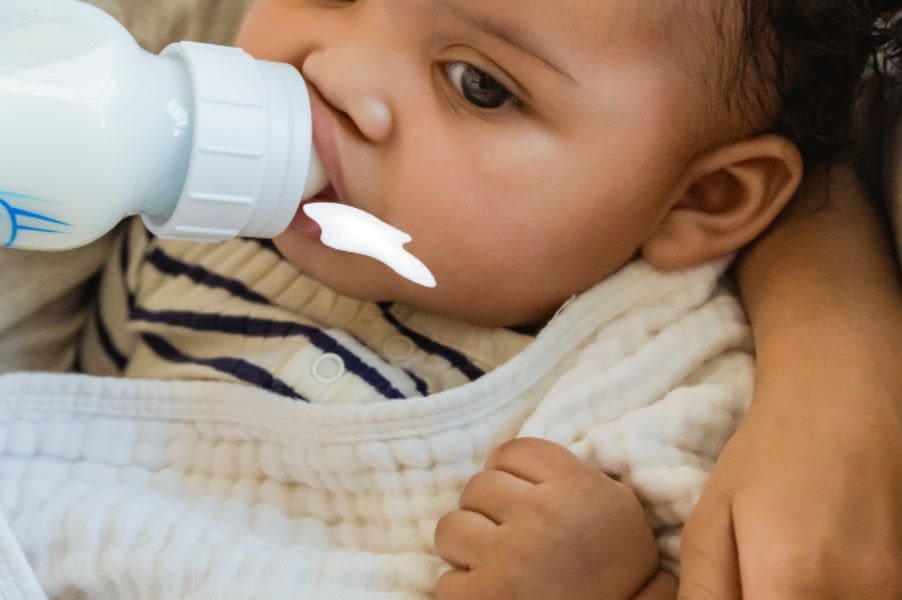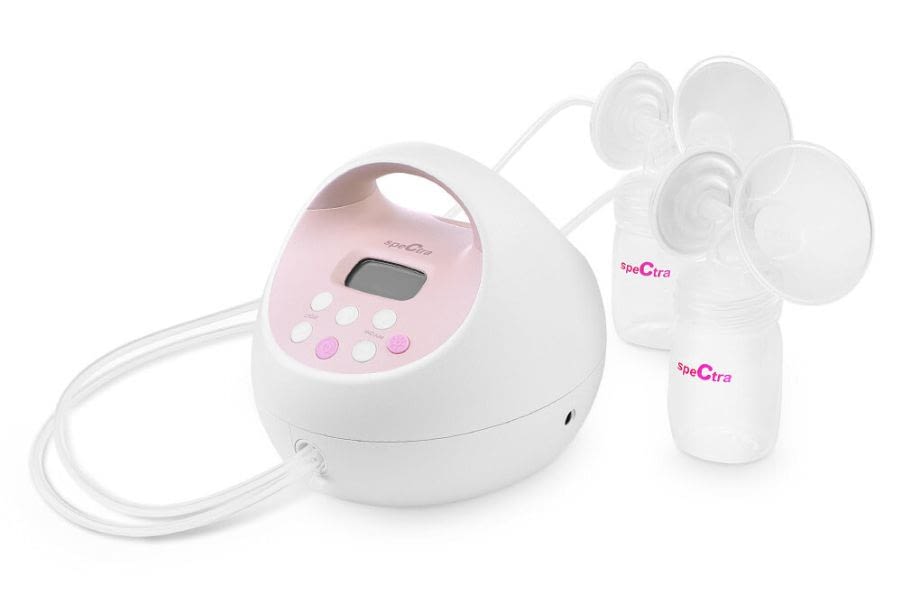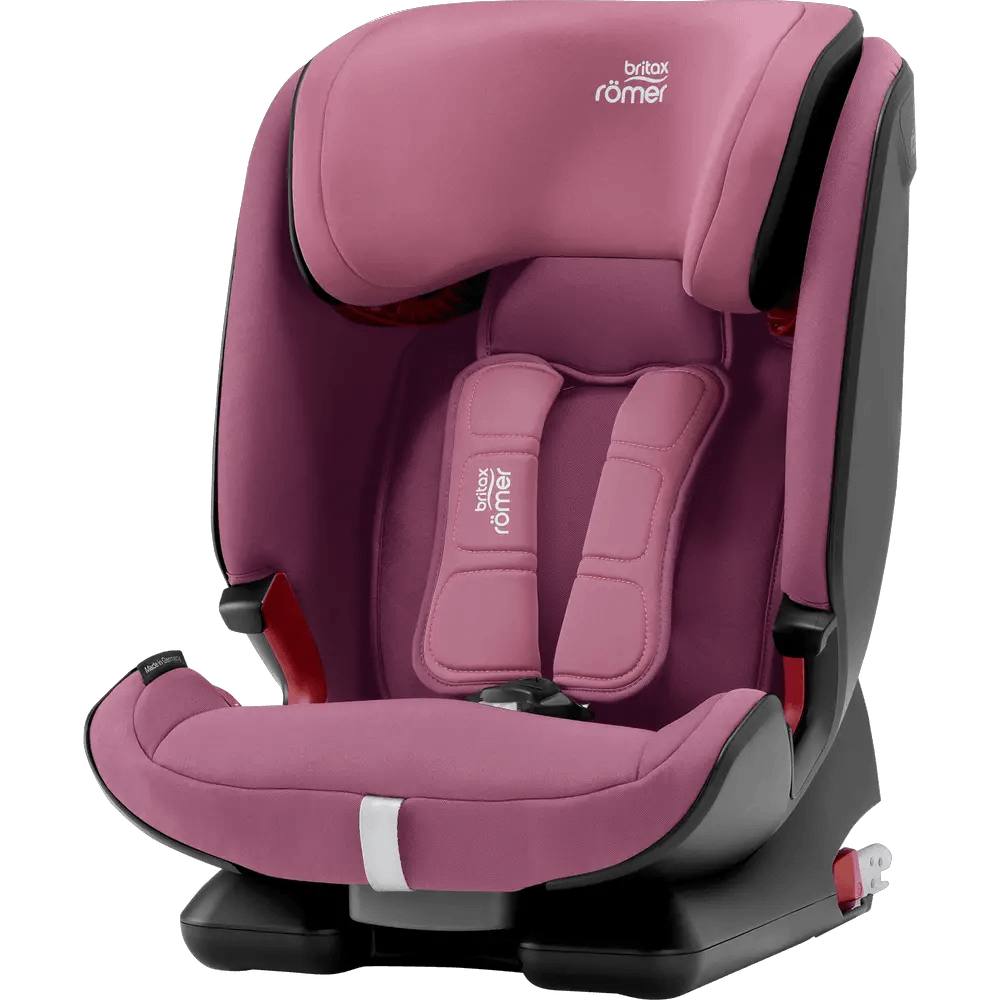Being a parent, you are always wondering about your baby’s proper growth and development. Without any doubt, breast milk stands as the optimal choice for your little one.
But do you know why storing breast milk in bottles with nipples isn’t recommended? In this blog post, I’ll explain the reasons why can’t you store breast milk in bottles with nipples and offer some tips on alternative storage solutions, such as Breast milk storage bags.
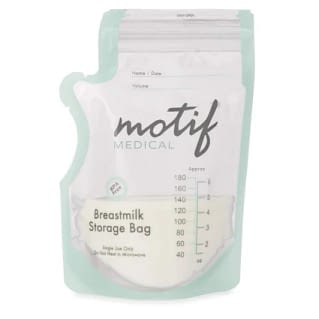
What Breast Milk Is and Why It’s Important
Breast milk is a beautiful nature-made food for newborns and infants. It’s a nutrient-rich liquid produced by mothers that provides the ideal nutritional content for infant growth and development. Breast milk contains essential nutrients, antibodies, and hormones that babies can’t get from any other food source. But can you store breast milk in bottles with teats?
Can you store breast milk in bottles with nipples and cap in the fridge?
While it might seem convenient, storing breast milk in feeding bottles with nipples isn’t recommended. The primary reason for this is to maintain the quality and safety of the expressed milk. The narrow and curved areas of the nipple can make cleaning difficult, leading to possible bacteria buildup.
But if you do so, consider these guidelines for storing breast milk in regular baby bottles.
How to Properly Prepare the Bottle for Storage
Proper preparation of the bottle for storage is critical to ensure the freshness and safety of the breast milk. Follow these steps for an effective process:
- Cleaning the Bottle: Before storing the bottle, wash your hands thoroughly. Then, clean the bottle and its parts in warm, soapy water. Rinse well to ensure no soap remains.
- Sterilizing the Bottle: After cleaning, sterilize the bottle and its parts. You can do this by boiling them in hot water for 10 minutes using a sterilizing machine or a microwave sterilizing bag. Ensure all components are fully submerged in water if you choose to boil.
- Cooling the Bottle: Allow the bottle to cool down completely before pouring breast milk into it. This will help to preserve the essential nutrients in the milk.
- Labeling the Bottle: Always mark the bottle with the date and time the milk expressed before storing. This helps to ensure that the oldest milk is used first.
- Filling the Bottle: Pour the expressed milk into the bottle. Do not fill it to the brim; leave some space for possible expansion during freezing.
- Sealing the Bottle: Securely seal the bottle with its lid or cap, ensuring no air gets in.
This procedure should adhere to every time you express milk for storage to guarantee the highest level of safety for your baby’s nutrition.
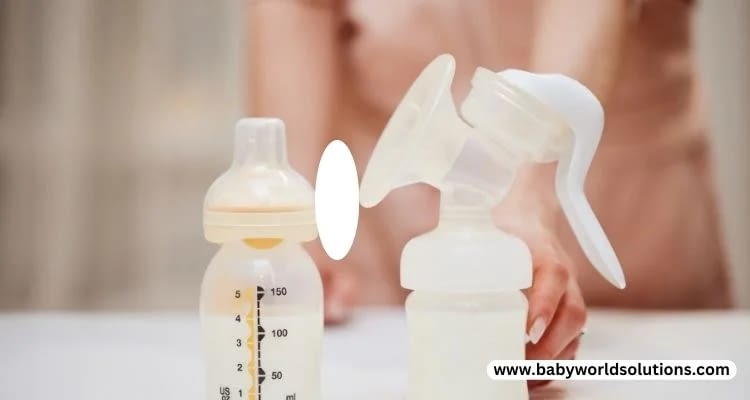
How long can you store breast milk in a bottle with nipple attached
The duration breast milk can be safely stored in a bottle with a nipple mainly attached depends on the storage conditions. Typically, freshly expressed breast milk can be stored:
- At room temperature: 4 hours is optimal, but it can be stored for 6-8 hours if the room is very clean.
- In a cooler with ice packs: safely for up to 24 hours.
- In a refrigerator (at 40°F or 4°C): for up to 4 days is optimal, but it can be stored for up to 8 days if collected very cleanly.
- In a freezer (at 0°F or -18°C), it is optimal for about 6 months but can be stored for up to 12 months.
Always store the bottles at the back of the fridge or freezer where the temperature is constant. Before feeding, check the milk for any signs of spoilage, such as a sour smell or discoloration. If in doubt, it’s best to discard the milk. Always be sure to use the oldest milk first.
Tips for Safely Reheating and Thawing Stored Breast Milk in a Bottle
Reheating and thawing breast milk correctly is essential for preserving its quality and nutritional value after knowing if can you store breast milk in baby bottles. Here are some tips to help you safely reheat or thaw stored breast milk in a bottle:
- Reheating Breast Milk on the Stovetop: Place the frozen or refrigerated milk bottle in a pot filled with warm water. Heat the water until it reaches a gentle boil, stirring occasionally to ensure even heating. Take care not to overheat the milk, which can destroy some of its essential nutrients.
- Reheating Breast Milk with a Bottle Warmer: Using a bottle warmer is a convenient option for reheating previously frozen milk. Warmers usually have instructions on using them to reheat milk safely and correctly.
- Thawing Breast Milk in the Refrigerator: Place the bottle of frozen breast milk in the refrigerator and allow it to thaw overnight. Once it has thawed, stir or shake the liquid to ensure an even temperature before giving it to your baby.
- Thawing Breast Milk at Room Temperature: Keep the bottle in a bowl of warm water and allow it to thaw slowly. Check the temperature of the milk every few minutes to ensure it does not overheat.
Remember, it’s essential to discard any leftover milk and not save it for later use. But is it ok to store breast milk in bottles with nipples?
Risks: Why can’t you store breast milk in bottles with nipples?
Storing breast milk in feeding bottles with nipples are not recommended because it introduces several potential risks.
Risk of Contamination
When you store breast milk in bottles with nipples, there is a higher risk of contamination. The nipple may contact your baby’s mouth, transferring bacteria to the milk.
Additionally, the complex structure of bottle nipples makes them hard to clean thoroughly. Milk residue can remain, fostering bacterial growth, contaminating the milk, and posing a health risk to your baby.
Nutrient Degradation
The repeated heating and cooling of the milk in these bottles may lead to the degradation of its nutritional content, negating the benefits of breast milk.
Storage Issues
Storing breast milk in bottles with nipples can also cause problems with storage. The nipple can take up additional space, making it harder to fit the bottles into the refrigerator or freezer. Additionally, the pressure from the nipple can cause the bottle to leak, which can be frustrating and messy.
Nipple Confusion
Using bottles with nipples for storing breast milk can also cause nipple confusion for your baby. Nipple confusion occurs when a baby has difficulty latching to the breast after being bottle-fed. This is because the shape and flow of a bottle nipple differ from that of a breast, making it harder for your baby to adjust.
Potential Health Risks
Consuming milk from a bottle that hasn’t been properly cleaned can expose the baby to bacteria, posing a health risk.
Possibility of Overfeeding
Storing milk in feeding bottles can inadvertently lead to overfeeding. The baby may continue drinking because the bottle is there, not because they are still hungry, which can disrupt their natural feeding patterns and potentially lead to weight issues.
Wastage
Storing breast milk in bottles with nipples can also result in wastage. When your baby drinks from a bottle with a nipple, they may take in more milk than they need, resulting in wasted milk.
Additionally, bottles with nipples can be harder to measure accurately, making it difficult to ensure that your baby is getting the right amount of milk. If a baby does not finish the milk in one feeding, it cannot be saved and must be discarded.
Therefore, following recommended practices for storing breast milk is crucial to mitigate these risks and ensure the best for your baby’s health.
How to store Breast Milk properly?
Handling breast milk correctly is crucial to preserving its nutritional benefits and ensuring it’s safe for your baby. Here are some tips:
- Wash your hands: Before expressing breast milk, wash your hands thoroughly.
- Use appropriate containers: Store expressed milk in clean, food-grade containers with tight-fitting lids. Glass or hard plastic containers are most suitable. Avoid using containers with cracks or chips, as they can harbor bacteria.
- Don’t mix temperatures: If you’re adding fresh breast milk to a container of already refrigerated or frozen milk, cool the new milk first.
- Date it: Always label your milk with the date it was expressed. This helps you keep track and ensure you use the oldest milk first.
- Don’t overfill: Leave space at the top of your containers, especially if you’re freezing the milk. Breast milk expands as it freezes.
- Thawing and warming milk: Thaw milk overnight in the refrigerator or under running warm water. Never use a microwave to thaw or warm breast milk; it can create hot spots and damage the milk’s nutritional quality.
Alternatives to Using a Nipple with Bottles/ Breast Milk Storage Options
Breast milk storage might seem complicated, but it’s quite straightforward with the right information and tools. Several methods are available to store breast milk, each with benefits and considerations safely.
- Breast Milk Storage Bags: These special bags are specifically designed for storing breast milk. They are durable, leak-proof, and can be sealed tightly. Plus, they are pre-sterilized and disposable, eliminating the need for cleaning.
- Plastic Bottles with Tight-Fitting Lids: They are cost-effective for safely storing breast milk. Ensure the plastic is BPA-free and the lids fit securely to prevent any potential leaks.
- Glass Bottles with Airtight Lids: These are another suitable option for storing breastmilk. Glass doesn’t absorb smells or flavors and can be sanitized easily. However, they can be more expensive and break easily.
- Silicone Milk Collector: These are great for catching the milk that naturally leaks from your breasts throughout the day. They are effortless to clean and can be used repeatedly.
- Milk Trays: Similar to ice cube trays, but with lids, these let you freeze milk into cubes, which can be easily defrosted.
Each option caters to different needs and preferences, providing flexibility for mothers on their breastfeeding journey. It’s essential to adhere to proper storage procedures to ensure that your baby’s milk stays fresh and nutritious.
Breast milk storage bags
These storage bags offer a convenient and space-saving solution to store the milk in the fridge. These bags are specially designed to safely hold frozen breast milk without any risk of leakage, making them suitable for storage in the refrigerator and freezer.
Most brands also include a built-in date tracker, allowing you to track when the milk was expressed easily. These versatile bags can also be used to freeze homemade baby food. Whichever method you choose, label the bag with the expression date and use the frozen breast milk within the recommended time frame.
Motif Medical’s Milk Storage Bags

If you’re seeking a convenient and space-saving solution for storing breast milk, look no further than Motif Medical’s Milk Storage Bags. These bags are an excellent choice, capable of holding up to 8 ounces of milk.
With a built-in date tracker and easy-pour spout, they provide optimal functionality. Whether you store them in the refrigerator or freezer, these bags offer the flexibility to thaw before adding milk or freeze with fresh milk.
Remember to use them within the recommended time frame to ensure maximum freshness. Additionally, consider exploring other options, such as Lansinoh Storage Bags and Kiinde Milk Storage Pouches.
Storage bottles and cups
Can you store breast milk in bottles with nipples? An alternative method for storing freshly expressed milk is to utilize baby bottles or cups. These receptacles can be composed of Glass, plastic, or stainless steel. However, it is essential to thoroughly cleanse the cups and bottles with soapy water before usage.
What types of bottles are best to store breast milk to feed the baby?
There are certain standard features to look for in ideal storage bottles when it comes to storing breast milk
- BPA-Free Plastic or Glass Bottles: BPA-free plastic bottles are popular due to their lightweight and unbreakable nature. However, glass bottles are also an excellent option, especially if you’re concerned about potential chemicals in plastic. They are also easily sterilizable and durable.
- Compatibility with Your Breast Pump: Bottles compatible with your milk pump can streamline the process, as you can pump directly into the storage bottle. This reduces the need for transferring milk and minimizes the risk of spills.
- Leak-Proof Lid: A secure, leak-proof lid is vital to prevent any spills or contamination. Some lids even come with a built-in measurement scale to help you track the amount of milk stored.
- Easy to Clean: Look for bottles that are easy to disassemble and clean. Dishwasher-safe bottles can save you considerable time and effort.
- Size Variations: Bottles that come in different sizes offer more flexibility. Smaller bottles are perfect for storing smaller quantities of milk, while larger bottles can be used when your milk supply increases.
Some of the most recommended brands for breast milk storage bottles include Lansinoh, Medela, and Philips Avent. Always remember that proper cleaning and sterilization of the bottles are crucial, regardless of the type of bottle chosen.
Philips AVENT Breast Milk Storage Cups

Philips AVENT’s Storage Cups provide an excellent solution for storing fresh breast milk. These BPA-free cups have a capacity of up to 6 ounces and can be conveniently stored in the refrigerator or freezer. Equipped with leak-proof lids, these cups can be thawed or frozen alongside fresh milk.
What’s more, these versatile containers can also be used for feeding your baby by using convenient adaptors. It’s worth noting that these cups are compatible with Philips AVENT breast pump parts.
Lansinoh Breastmilk Storage Breast Pump Bottles
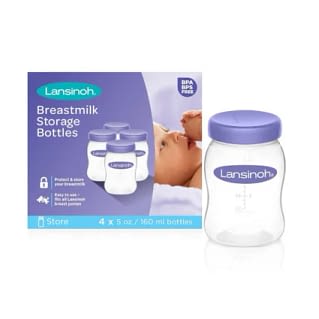
Parents often wonder if they can store breast milk in bottles with nipples, just like many other things. Well, with Lansinoh Breastmilk bottles, the answer is a resounding yes! These bottles feature a clever screw top airtight lid design that can be easily interchanged with nipples for quick and convenient feeding. No need to purchase extra bottles!
These BPA-free bottles are capable of holding up to 8 ounces of milk and offer a cost-effective and incredibly convenient way to store breast milk. No more dealing with bags on the freezer shelf or in the fridge! Plus, cleaning is a breeze as these bottles can be safely placed in the dishwasher.
Moreover, these bottles are compatible with most breast pumps, making the entire process even more seamless. So, rest assured that Lansinoh Breastmilk bottles are the perfect solution for storing breast milk effectively and efficiently.
Storage containers for baby food and milk
Using storage containers is a fantastic method to guarantee the freshness and safety of your baby’s food and milk. These containers shield the food from oxygen and light exposure, preventing contamination and spoilage.
Moreover, many of these containers are crafted from BPA-free materials, providing a safer and healthier option for storing your little one’s nourishment.
OXO Tot 2 Ounce Baby Blocks Food Storage Containers
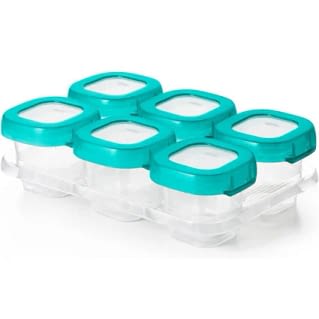
These containers are perfect for storing breast milk and your baby’s food. The OXO Tot 2 Ounce Baby Blocks provide frozen milk cubes and are safe for storing your baby’s food. The airtight lids ensure freshness. It has a sleek design and convenient size, these containers are easy to use and store. Additionally, they come in a delightful teal color that will captivate your baby’s attention.
Benefits of Using a Closure System When Feeding Baby From a Bottle
A closure system when feeding your baby from a bottle offers several advantages.
- Maintains Freshness: A closure system helps seal the bottle effectively, keeping the milk fresh for extended periods. This is particularly important when feeding a baby, as stale or contaminated milk can lead to health issues.
- Prevents Leaks: A sound closure system prevents leaks by providing a secure fit. This is especially useful during transport, preventing milk from spilling and causing messes.
- Sanitary: By closing off the bottle, the closure system provides a barrier against potential contaminants, making it more sanitary than leaving the bottle open.
- Preserves Nutrients: By sealing the bottle, a closure system helps preserve the milk’s nutritional value. Exposure to air can degrade certain nutrients, so keeping the bottle closed when not in use can help to maintain the milk’s quality.
- Convenience: A closure system allows for easy storage and transport of the bottle, making it more convenient for parents on the go. The ability to safely seal the bottle means it can be stored in a bag or car without worrying about spills or spoilage.
- Reduced Waste: With a closure system, it’s easier to save unfinished milk for the next feeding, reducing waste. This is significant, considering the effort and time involved in expressing breast milk.
Always clean and sterilize the closure system and the bottle to ensure its safety and effectiveness.
Conclusion: Can you store breast milk in baby bottles with nipples?
Although it may seem convenient to store breast milk in bottles, it’s essential to avoid using bottles with nipples. Store your breast milk in separate bottles and use a different container for feeding is a safer and more hygienic option. Additionally, it can help prevent nipple confusion, wastage, and even problems with breast health. By taking these precautions, you can ensure your baby gets the safest and healthiest milk possible.
Parents Also Ask
Can you store breast milk in mason jars?
Yes, you can store breast milk in mason jars. Mason jars are a great option because they are made of Glass, which does not absorb odors, flavors, or colors. Also, they’re not likely to contain potentially harmful substances that can be found in plastic.
Can I store breast milk in Tommee Tippee bottles?
Yes, you can store breast milk in Tommee Tippee bottles. Tommee Tippee bottles are specifically designed for storing and transporting breast milk. They come with a useful measuring scale to easily track how much breastmilk your baby drinks. Also, they have airtight seals to ensure that bacteria can’t enter the bottles during storage.
Are there any special considerations when storing breast milk?
Yes, there are a few special considerations to remember when storing breastmilk. Always use sterilized and airtight containers specifically designed for storing breastmilk.
1 Visit today


